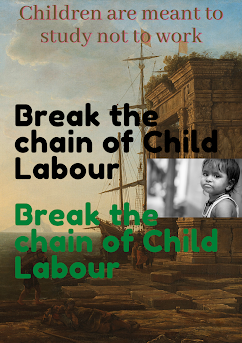The rapid spread of covid-19 pandemic across the globe and uncounted death tolls, declining in economy of every country, mobility and livelihood of millions of daily wages workers had attested to the fact that this pandemic is one of the great levelers. It has showed us the strength and weakness of each country in terms of health infrastructure, gross domestic product and social security systems. However, this pandemic has excessively affected the developing and low income countries and even more the poor people of the same.
The families of poor and vulnerable groups fall very deep into the poverty and illness. When it comes to India where two-thirds of the population lives in poverty and 68.8% of the total population lives on less than $2 a day. Millions of people migrated to their home land and stay there without any hope of light. The risk of children involving in economic roles has increased so far because of the starvation. The children working in hotels, railway platforms and on various working sites to get meal for himself and his families.
As we are
in 21st century but still 152 million in the world are in child
labor, 73 million of them are in perilous work. The NSS report of government
of India suggests that 95% of the children of age group 6-13 are attending
education (formal or informal) and that of the corresponding age group of 14-17
years are 79.6%. This shows that a large population of children are still
deprived of getting proper education ,and facing physical and mental risks to
a healthy development.
A decline in India
A piece of good news is that India shows a
major decline in child labor in a decade of 2001-2011 and this demonstrates
the right addition of a policy and its proper implementation. Policy
interventions such as Mahatma Gandhi National Rural Employment Guarantee Act
(MNREGA) , Right to Education Act 2005 and mid-day meal scheme has lead the way
for children to come to school.
Challenges in Education lead to spike in child labor in this pandemic
Closure of
educational institutions and challenges of distance and digital learning
increased the number of drop out children in our country. When the child even
don’t have anything to eat, how come he/she able to manage the mobile phones or
internet facilities for the study purpose. The NSS report named ‘’Household
Social Consumption of India’’ suggests that only 24% of the Indian households
had a proper internet connection in the year 2017-2018.
Conclusion
Of course
the challenges are significant and multifarious but it is not impossible
to meet them if the right level of commitment among all the appropriate
stakeholders and the right mix of policy and programmatic interventions are
present. As we reinforce the pledge to protect the children from unacceptable
forms of work, we have to ensure that our focus in this particular problem
should not be mitigated till we completely break the chain of child labor
across the world. Our action today will determine the future of children
tomorrow.
- by Anjali Mishra








0 Comments